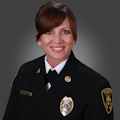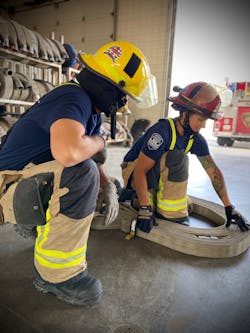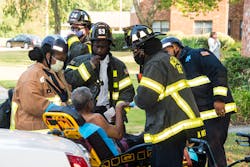Attracting and Retaining a Diverse Workforce
It was 11:00 p.m. on a brisk Saturday evening. We were heading to the campus area of the city for an assault call. It was cold and rainy when we arrived. She was crying. Her clothes were torn. In that terrifying, vulnerable moment, as the red lights flashed across her bruised skin, Ella wanted to talk only to me.
On the way back to the station, my partner turned to me and said, “I’m really glad you are here.”
Fire departments frequently see examples of the value that a diverse workforce can bring and how having one can provide better service delivery for the communities that they proudly serve. However, attracting and retaining a diverse workforce in the fire service industry can be difficult at best. In fact, the American fire service often is noted as the least diverse publicly funded service.
So, what do departments do about it? They first must recognize the value of diversity, and then they must prioritize the need to recruit and retain a diverse workforce. To be successful, an agency can’t just talk the talk, but must instead walk the walk, through active recruitment efforts and updated, inclusive, and comprehensive procedures and policies. Efforts must include meaningful input from those diverse members who have led a successful and happy career as well as from those who opted to leave. Leadership must ask diverse members the difficult questions. What made you want the job? What made you stay? What were the difficult aspects? What can we do better?
Recruitment & the media
To be successful in recruiting a diverse and able candidate pool, departments must help diverse community members to visualize themselves in the role of firefighter—and more importantly, to visualize themselves happy in that role. Too often, the mainstream media shares front-page stories of the angry and disgruntled, while the diverse members who have a positive view of the job and positive messaging are left quietly on the sidelines. After all, a story of a happy firefighter is hardly headline-worthy.
Public information officers must take advantage of opportunities to put diverse career firefighters in the limelight: Let them talk about their job, the opportunities that this industry affords, and how they made an “unusual” career not only fit their home and family life but enhance it.
Opportunities at career fairs abound, and today, social media is perhaps more powerful than any major news network, allowing a glimpse into the lives of everyday people, not just those who have a sordid story to tell. A quick view of my own Facebook page reveals that I have a successful career in which I am included and valued and have a beautiful and fulfilling homelife as mom, wife and daughter.Mentors and champions
Although solid fire service recruitment programs often target diverse talent pools at an introductory level, to be successful in the long term, these programs must do more than hand out fancy recruitment brochures and play an exciting, best-moments-of-the-job video. Recruitment efforts should include vocational educational offerings, cadet academies and formal mentorship programs. By working together, community colleges, high schools and fire departments across the nation must put the fire service front and center for upcoming graduates to consider as a career choice. Cadet academies are becoming more common and rapidly fill with young men and women who are from all walks of life who seek a hands-on taste of a career in public service. Who is better to explain the realities of the job requirements and station life to a diverse candidate pool than your own diverse incumbents?
Formal mentoring of firefighter candidates is rare, but when it’s implemented, its value regarding promising, upcoming leaders can translate into a proven approach to succession planning. Mentoring has the capability to offer in-depth guidance about the job, to teach candidates how to test well, and to show them how to be mentally and physically prepared, far ahead of testing time. Mentoring allows a department to help potential recruits to identify and address any weakness and to offer solutions, which make recruits better prepared for application day.
By selecting the right mentors, departments readily can explain the unique challenges that diverse candidates might face and, most importantly, how these challenges can be overcome, belying the negative press stories and putting to rest fears of incompetency or “not fitting in.” That said, selected mentors need not be completely diverse. In fact, the nondiverse champions for the cause can have a big effect: When diverse employees are supported by nondiverse co-workers, they come, and they stay. My partner’s words stuck with me, and in the early years of my career, when others sought to point out my weaknesses, he countered with a list of strengths: hard-working, sharp, emotionally intelligent, compassionate. As another co-worker put it, “We can’t all be linebackers. We need the running backs, too.”
Policies help tell the story
Although recruitment efforts are important, for many, making a career decision also involves a thorough study of the agency that interests the recruit. If I’m a 28-year-old woman who is interested in joining a fire agency, you can bet that I also am interested in its pregnancy policy, and I might want to know how station bathrooms are designed. If I’m a single dad, I might want to hear about alternative work schedules or childcare support options. Departments can’t recruit diverse populations yet fail to anticipate and address their unique needs in a meaningful way. Hair policies must consider ethnic and gender nuances. Uniform suppliers must accommodate differing body types. Gang-style bathrooms don’t work, period.
By making necessary changes that support unique needs, departments make their employees—and their potential employees—feel heard, valued and included.
Not all created equally
The world of firefighting and emergency response has changed. The expectations and demands from communities require not only that members be fit and fast but also smart, kind, compassionate and relatable. Members must have courage and empathy and be able to connect with those who they serve.
Once upon a time, the concept of diversity demanded and claimed that we all are created equally. Thankfully, we indeed are not. As a leader, I know the strengths and weaknesses of each of my crew members, and I call upon their individual talents to best serve our community in the moment. I don’t need 50 firefighters to knock down a door. I need one. I also need someone to crawl through the tiny window, someone to hold a hand, someone to speak Spanish.
By diversifying their workforce through intention and effort, departments gain a greater range of talents, and with diverse talents, they can serve their community better.
About the Author

Sharon McDonough
Sharon McDonough is the director of Public Safety Communications Department in Tucson, AZ, which houses the city's 9-1-1 center. Previously, she was deputy chief over the EMS Division for the Tucson, AZ, Fire Department (TFD). She was hired by TFD in 1990, progressing through the ranks of firefighter, paramedic, captain, battalion chief and deputy chief and served a two-year appointment as interim operations assistant chief. McDonough has managed fire operations, medical administration, safety and the 9-1-1 communications center, developing and implementing innovative solutions to long-standing and trending industry issues.

